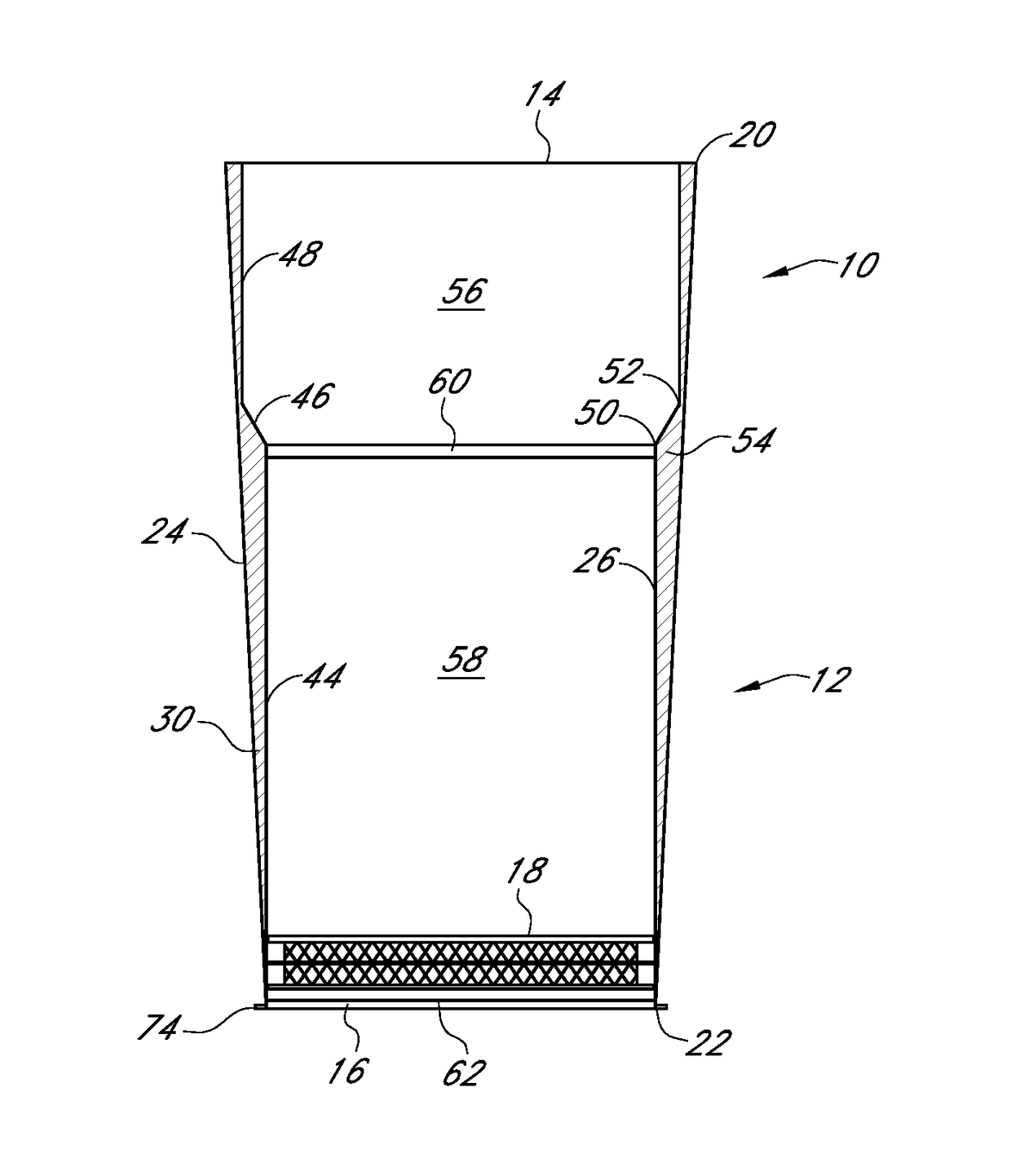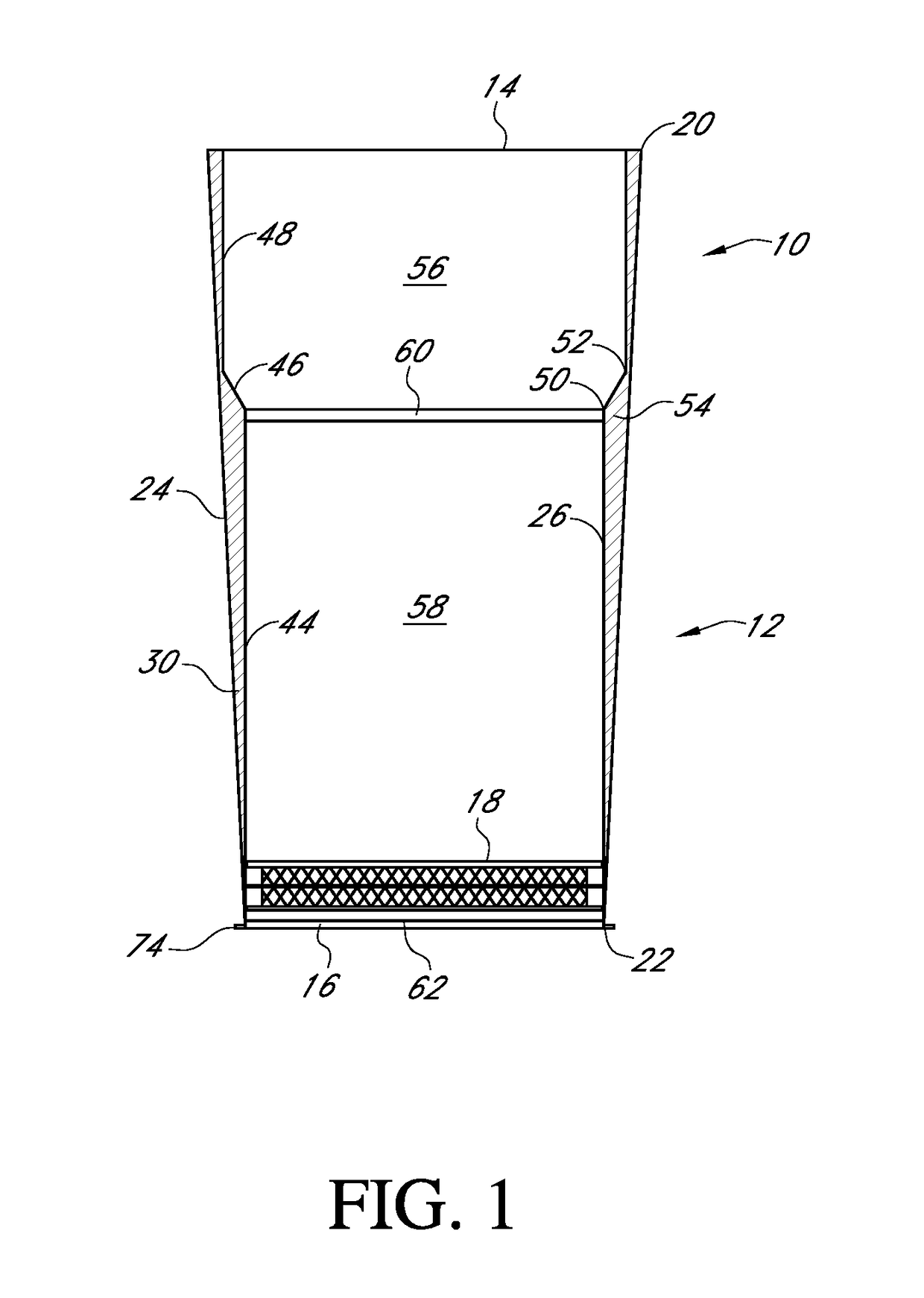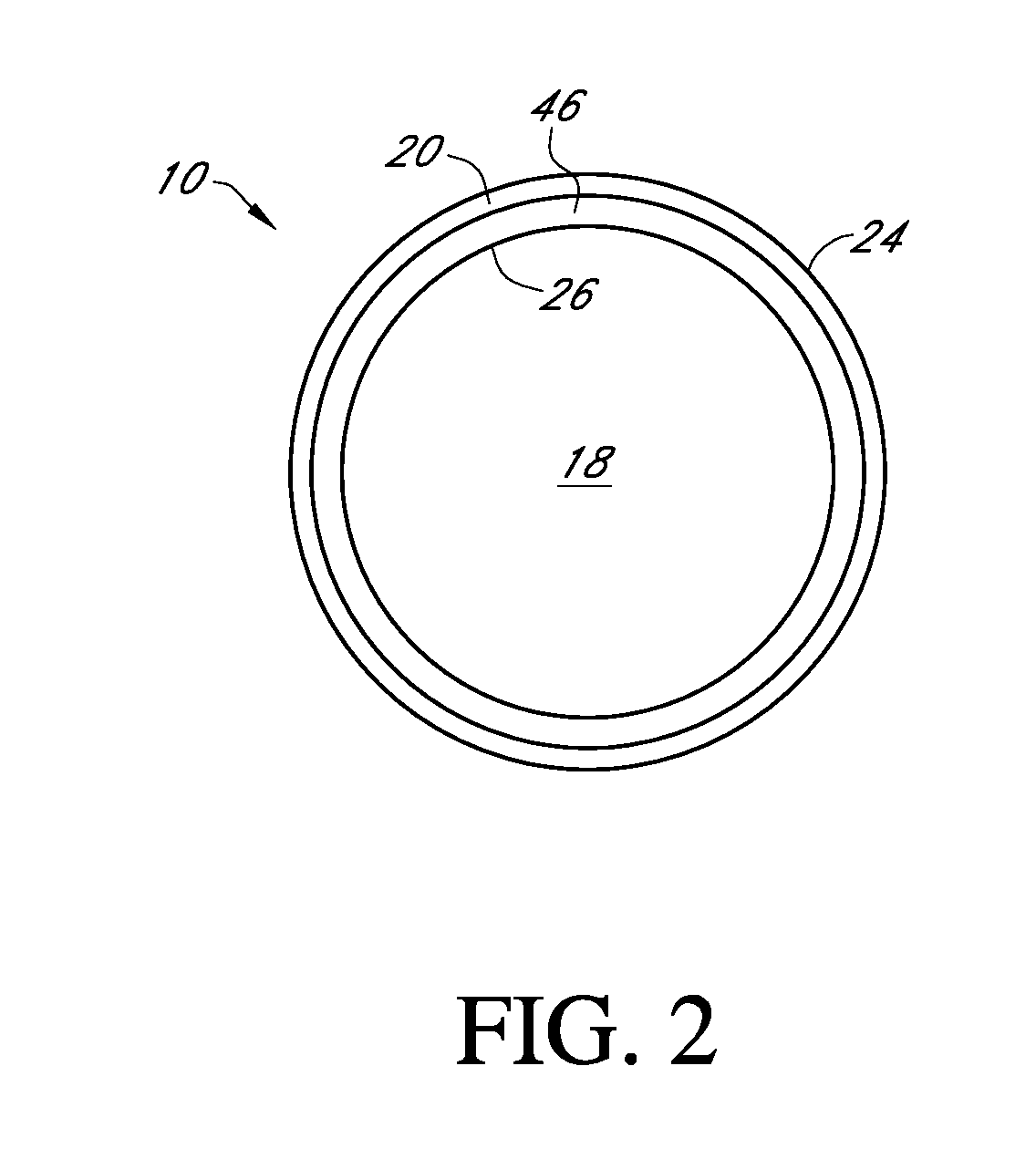Adjustable drinking cups
a drinking cup and adjustable technology, applied in the field of drinking cups, can solve the problems of increased risk, increased risk, and patients who cannot cope with rapid flowing fluids
- Summary
- Abstract
- Description
- Claims
- Application Information
AI Technical Summary
Benefits of technology
Problems solved by technology
Method used
Image
Examples
Embodiment Construction
[0034]With reference to the figures, an adjustable drinking cup 10 is shown having a continuous wall 12, which forms a top opening 14 and a bottom opening 16, and a plunger 18 that is received within the bottom opening 16.
[0035]The continuous wall 12 extends from a top end or lip 20 and a bottom end 22. The continuous wall 12 can be of any shape and size, but in the illustrative embodiment the continuous wall 12 is cylindrical. In other embodiments, the continuous wall 12 is rectangular. The continuous wall 12 in one embodiment is made of clear plastic in order to be seen through. In other embodiments, the continuous wall 12 can be made out of any suitable material.
[0036]The continuous wall 12 is formed between an exterior surface 24 and an interior surface 26. The exterior surface 24 extends upwardly and outwardly from the bottom end 22 towards the top end 20. The sloped exterior surface 24 prevents the adjustable drinking cup 10 from slipping while being held by a patient 28. In o...
PUM
 Login to View More
Login to View More Abstract
Description
Claims
Application Information
 Login to View More
Login to View More - R&D
- Intellectual Property
- Life Sciences
- Materials
- Tech Scout
- Unparalleled Data Quality
- Higher Quality Content
- 60% Fewer Hallucinations
Browse by: Latest US Patents, China's latest patents, Technical Efficacy Thesaurus, Application Domain, Technology Topic, Popular Technical Reports.
© 2025 PatSnap. All rights reserved.Legal|Privacy policy|Modern Slavery Act Transparency Statement|Sitemap|About US| Contact US: help@patsnap.com



